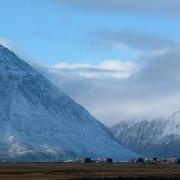The tundra – a dark horse in planet Earth’s greenhouse gas budget
The tundra – a dark horse in planet Earth’s greenhouse gas budget

Zackenberg Research Station in Northeast Greenland was established in 1995 and has since become one of the best platforms for research and monitoring in the Arctic thanks to the ongoing monitoring programmes. The buildings in Zackenberg are owned by Greenland’s Self Government, whereas operation and maintenance are undertaken by Aarhus University. Photo: Henrik Spanggård Munch, Aarhus University.
Vast areas on the Northern Hemisphere are covered by tundra. Here, dwarf shrubs, sedges, mosses etc. thrive on top of permafrost in areas where only the uppermost soil layer thaws during the short Arctic summer.
New studies show that the tundra may become a source of CO2 in the future. Researcher Magnus Lund from Aarhus University explains:
“The soil below the tundra contains very large quantities of carbon – more than twice as much as is present in the planet’s entire atmosphere. Therefore, we would like to know if the carbon will stay put – or if it will be released into the atmosphere as CO2 or methane as the climate warms.”





